We’ll see you in there.
Connect to customize your food & drink discovery.
By signing up you agree to our Terms of Service and Privacy Policy.
Vietnamese
Pho Le
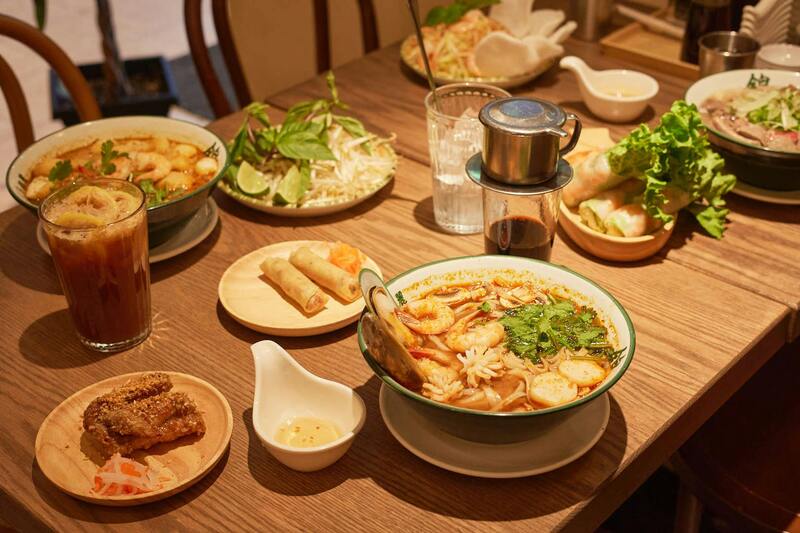
Every day, there are crazy line-ups to get into Pho Le.
It doesn’t matter that this Vietnamese restaurant is tucked away discretely in a nondescript, off-the-grid, strip mall in Richmond Hill.
Nor does it matter that it does no advertising.
It doesn’t even matter that Pho Le, which opened its doors in December, didn’t officially launch until February 10 and, until then, was serving a very limited menu.
Even now that it’s serving a full menu, that menu focuses on one thing and one thing only: Pho.
Yet the line-ups are impressively constant.
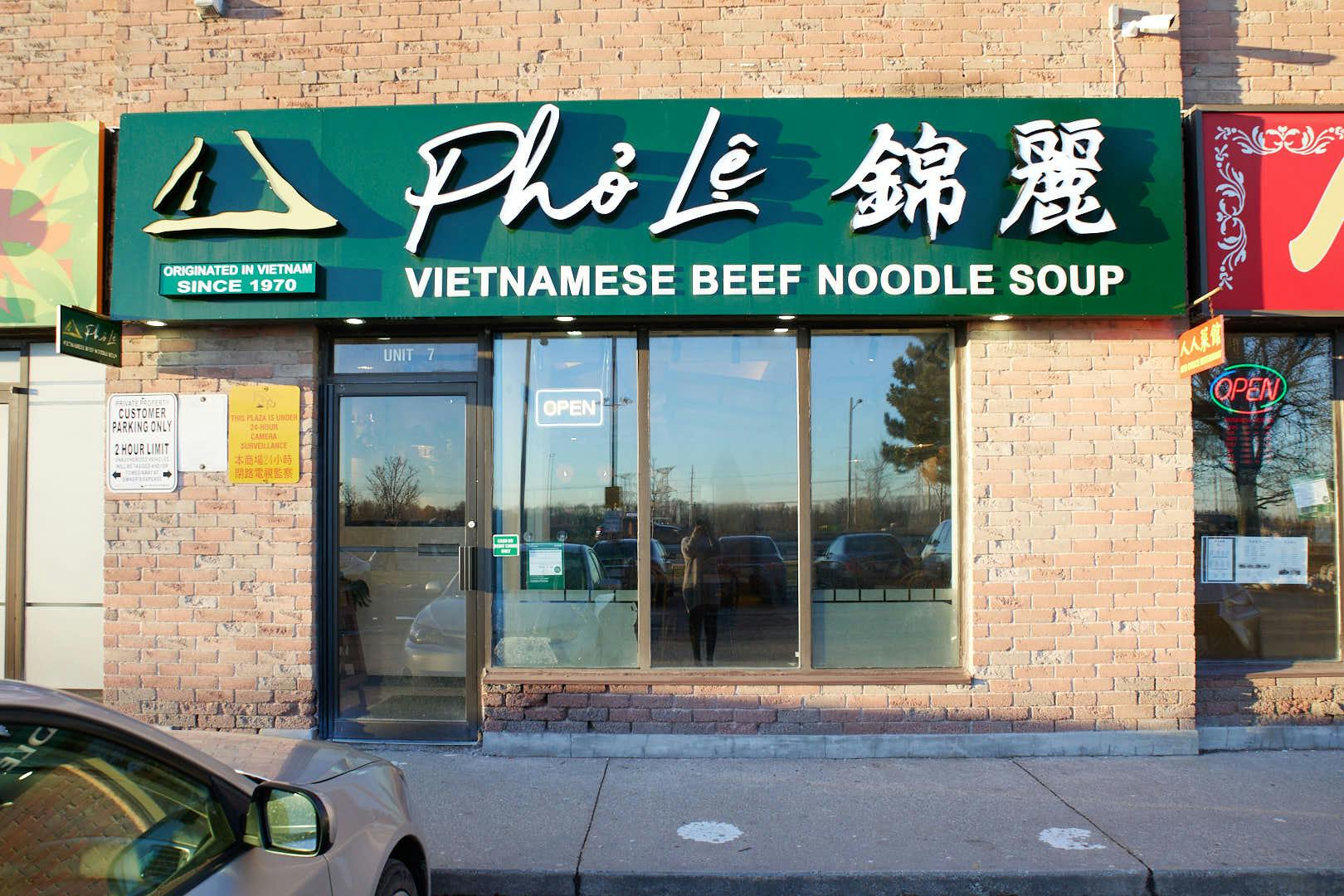
I can see them forming from my comfortable perch in Pho Le’s unpretentious yet welcoming dining room, its warm wooden accents and artisanal decorative elements steeped in home-style Vietnamese hospitality.
Before any food is actually set in front of me, I’m thinking that a possible reason for these spectacular line-ups has to do with the fact that, in 2023, the original, family-owned Pho Le, in Ho Chi Minh City, earned a coveted Michelin Bib Gourmand rating for the fragrant, steaming pho it’s been dishing up since 1970.
Where Michelin goes, hype tends to follow.
But it turns out my thinking was all wrong.

According to Bao Dao, Brand Marketing Director for the Canadian Division of Pho Le, the restaurant is such a culinary touchstone that its two HCMC locations have become must-stop pilgrimage sites for hungry and homesick Vietnamese-Canadians whenever they make a trip back to Vietnam.
Indeed, Richmond Hill’s sizable population of first and second-generation Vietnamese residents was a significant factor in the decision to open Pho Le’s first-ever non-Asian restaurant in Toronto. The owner – who bought the rights to franchise the brand throughout Canada – has plans to open locations downtown, in Mississauga and Oakdale, and eventually throughout the country. But this inaugural location was strategic in that when the area’s Asian community – in addition to Vietnam, Pho Le possesses a loyal fan-base in China, and especially Hong Kong (where it has nine locations) – got wind of its impending arrival, word-of-mouth began spreading throughout the GTA. Hence the line-ups.
“The brand is so recognizable for a lot of people. So when they saw it here, it was very nostalgia tweaking,” explains Dao. “When we opened, it was chaos. There was an insane amount of support from the Vietnamese community. They just showed up. They did so even though originally we only offered pho.”
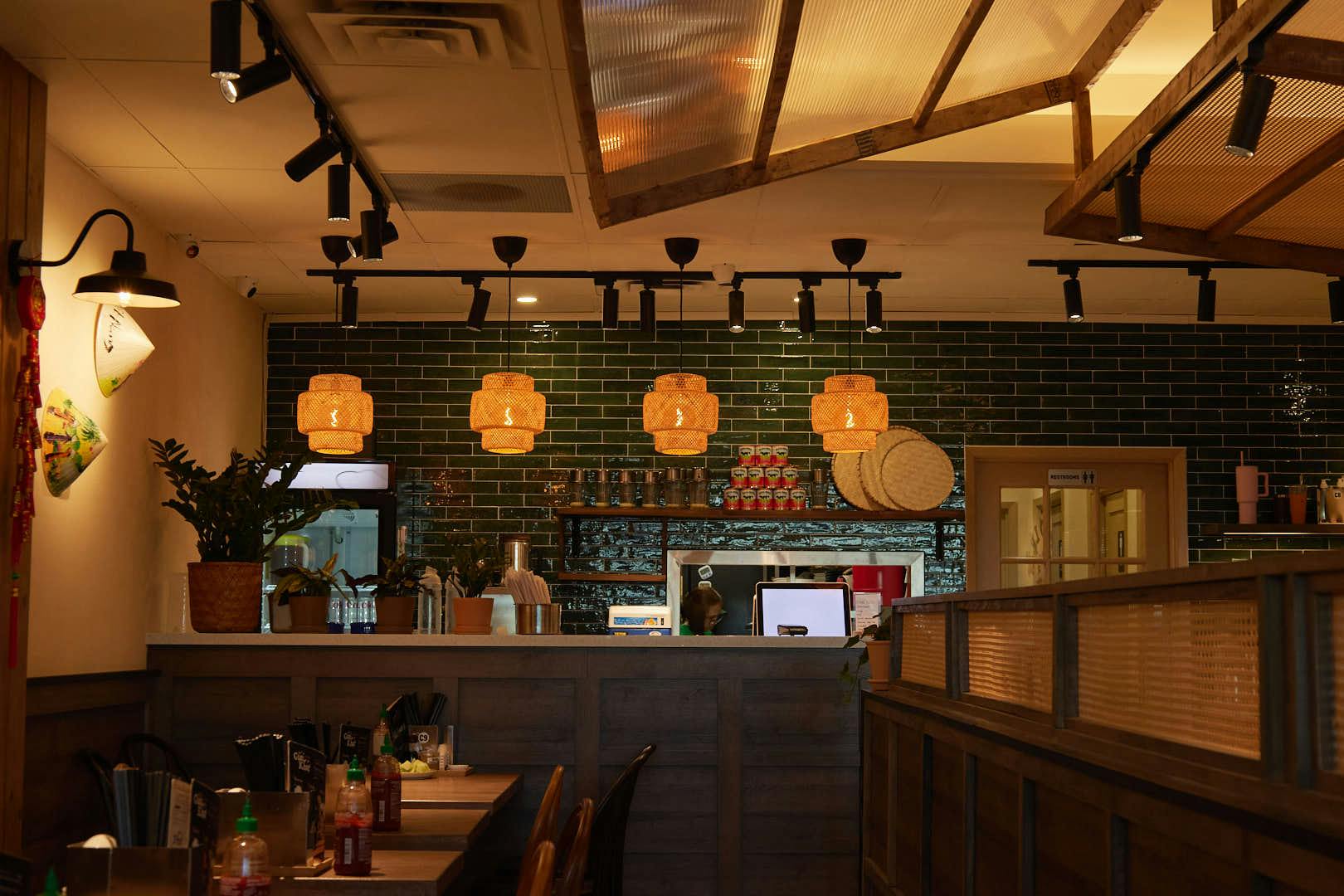
It’s important to stress that Pho Le’s pho is not just any pho. Nostalgia, recognition and homesickness all play their parts, but the principal reason for all the love and line-ups is the pho itself, specifically, the broth.
The broth is not just any broth. Adhering to Vietnamese tradition, it’s a beef broth, made with bones (originally, native water buffalo was used instead of cows). Pho Le favours the marrow and the femur, which when simmered, give off particularly rich, deep hits of beefiness. And yes, those bones are simmered – for a whopping 27 hours.
Because of the time involved, in Pho Le’s kitchen, bones are constantly on the boil. And if due to the aforementioned line-ups the broth sells out early, the restaurant’s policy is to close for the rest of the day, rather than take the culinary shortcut embarked upon by less patient restaurants who resort to a quick MSG fix.

During those fateful, yet fragrant 27 hours, while the broth is simmering, fat is being skimmed from the surface and sweet onions and chunks of sugar cane are being charred, then added to the liquid along with spices such as star anise, cinnamon and cloves. These skimmings and additions result in a broth that is exceptionally bright and clean, infused with a faint but indelible and mellow sweetness.
Such characteristics are hallmarks of pho encountered in South Vietnam. According to Dao, southern-style pho is more rarely encountered in Canadian Vietnamese restaurants than its North Vietnamese counterpart, whose broth tends to richer, meatier and more fat-forward. Patrons enamoured of the latter style can request a side bowl of skimmed liquid fat they can happily add at their discretion. Meanwhile, a bowl piled high with Thai basil, culantro, bean sprouts and lime caters to the southern predilection for more pungent, green, herbaceous flavours.

The test of a great pho broth is that you should desperately want to guzzle down every last drop in your bowl. You can easily do this at Pho Le. But to make a sustaining and satisfying meal of it, the bowl also comes chock full of noodles and beef.
There are two choices of noodles. Imported from Thailand, the standard rice noodles are silky, with a lovely soft chew to them. Also available are instant egg noodles, a favourite Vietnamese comfort food.
As for the beef, there are four options: tendon, brisket, beef balls and rare beef (with a fifth – beef ribs – coming soon). You can stick to one, have a mixture of two, or go all-out and order the signature pho, which features all four options. While all the beef used is high-quality, the rare beef (tai) is a particular treat. Instead of more common brisket or shank, Pho Le makes use of more fatty and tender rib-eye. When hot broth is poured over the thinly sliced strips, instead of becoming tense and chewy, they’re almost velvety.
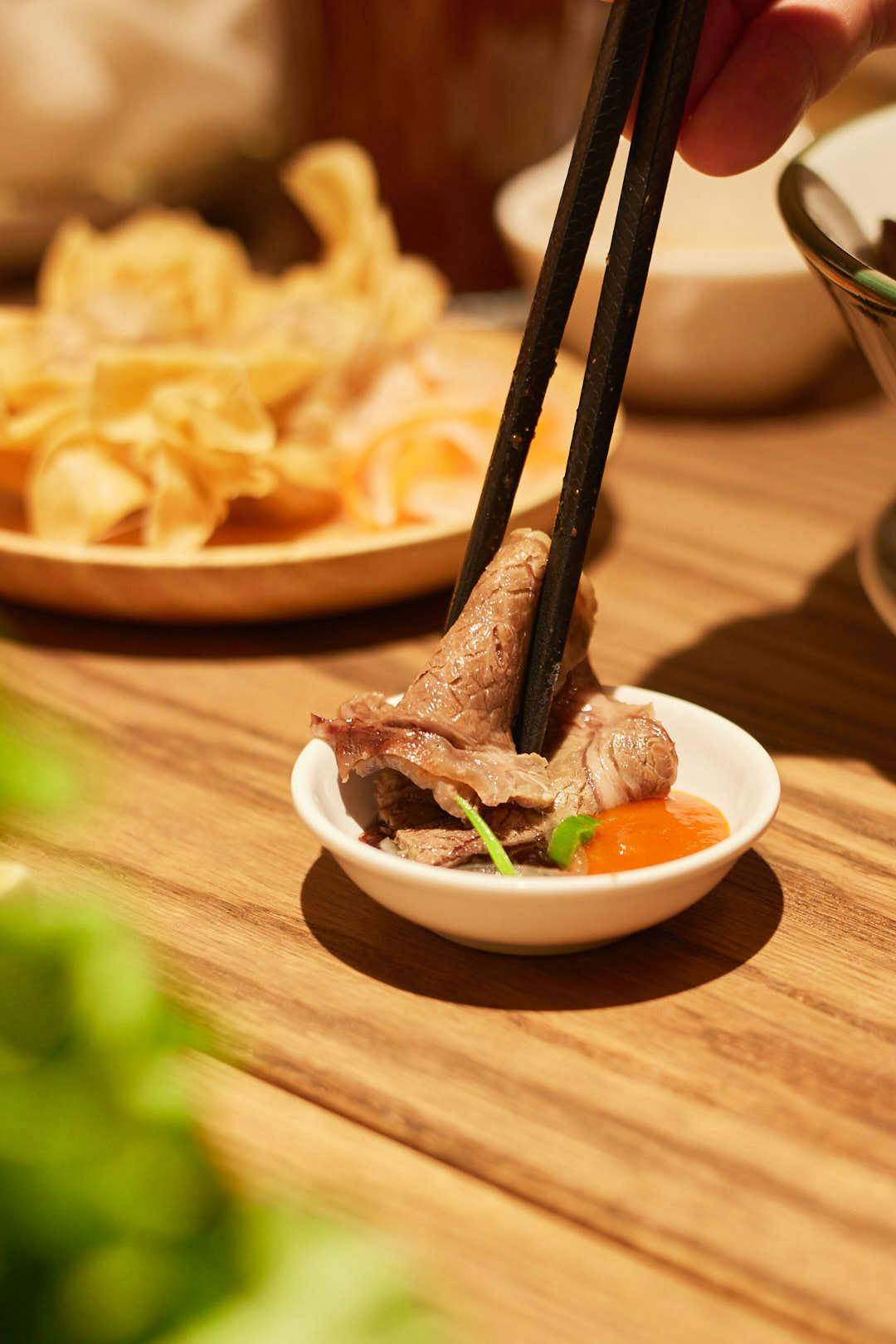
If you’re really hungry, you can add extras beef and noodle portions. You can also supersize your bowl. Since, in Vietnam, pho is traditionally served for breakfast, you can even opt for a rare egg, cracked into the bottom of the bowl and (barely) cooked in broth. Traditionally, people drink the egg first, warming up the stomach for the pho to follow. Says Dao, “We had so many people asking us, ‘Do you have it? Do you have it?’ that we added the egg to the menu.”

Most Vietnamese restaurants in Toronto serve pho in addition to a wide assortment of rice and noodle dishes. However, following the Vietnamese tradition of pho-only specialty stands, at Pho Le, pho is definitely the main event. That said, two other soups that enjoy great popularity in Vietnam are also featured.
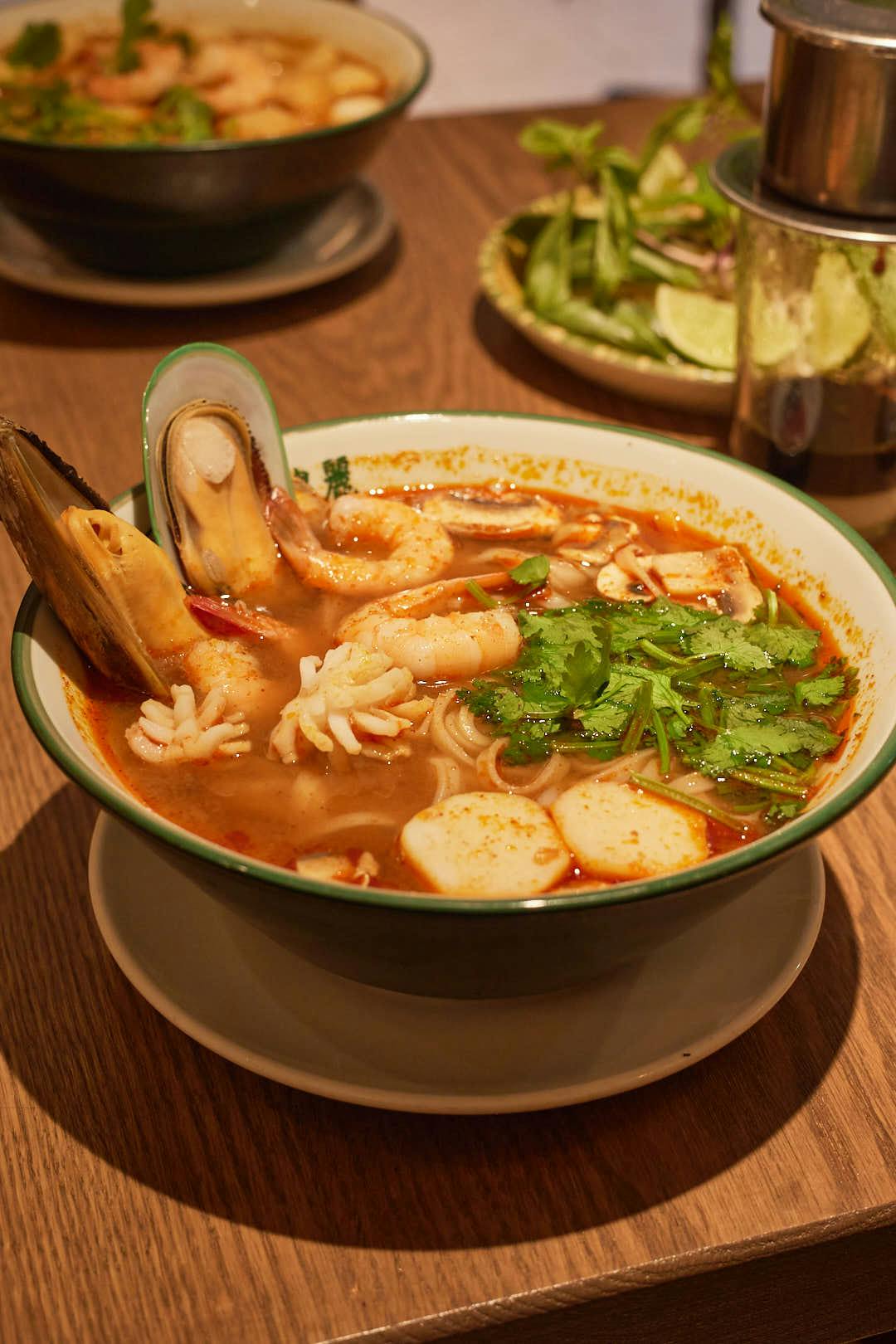
Fragrant with lemongrass, kaffir lime, galangal, fish sauce and heat-packing chili peppers, Thai tom yum offers hearty warmth and lots of spicy, citrusy kick. Although you can have it with beef, the original seafood version is replete with a small ocean’s worth of glistening shrimp, mussels, squid and fish balls.
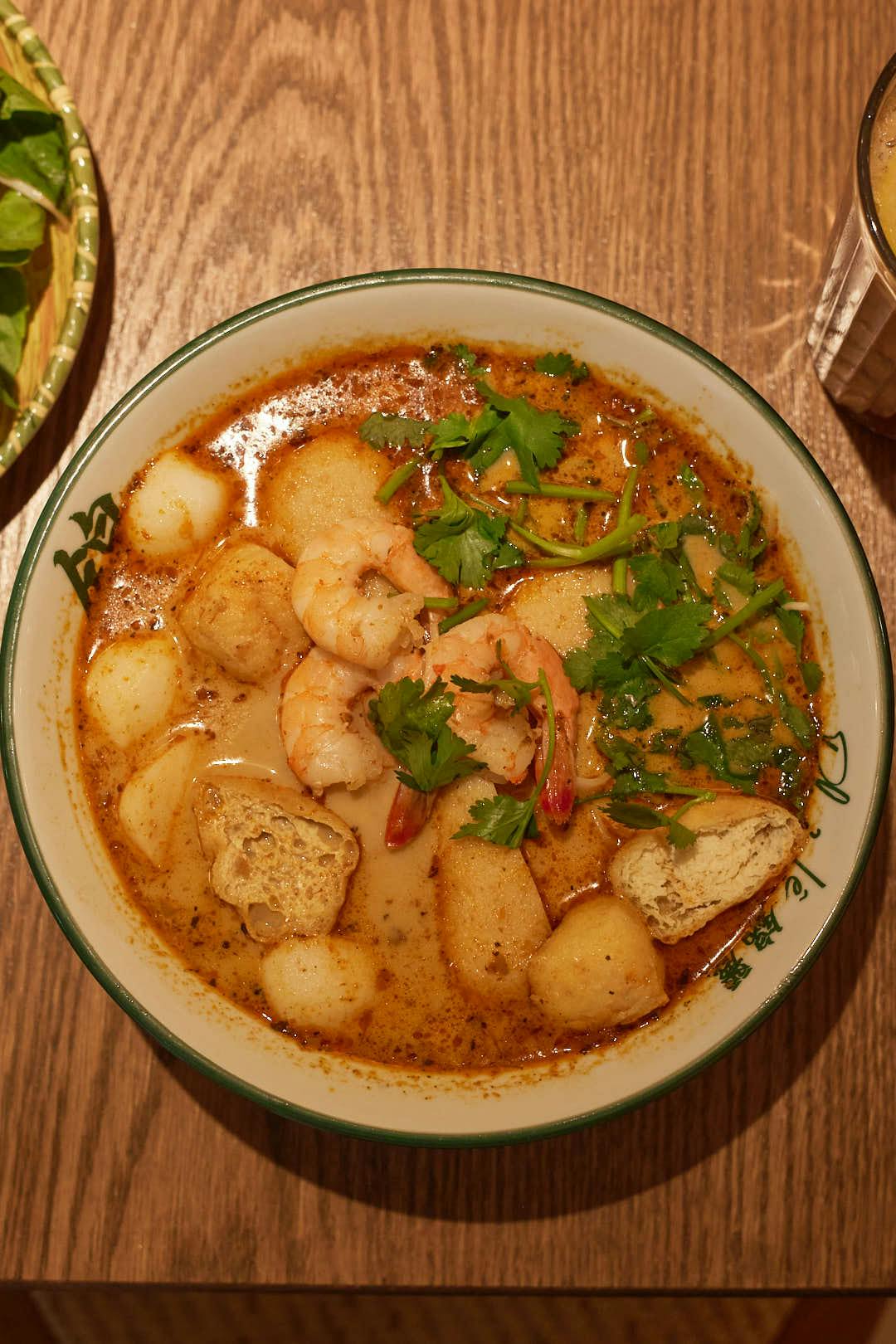
The Malaysian laksa also packs considerable heat, with a hint of curry and sweet creamy richness courtesy of coconut milk. As with the tom yum, a beef version is available, but the original seafood version is plied tantalizingly high with briny shrimp, fish cakes, fish balls and fried tofu.
In addition to the main soups, Pho Le offers several traditional Vietnamese appetizers. Made in-house, you can order them individually, or as part of a Combo Set in which they’re served in half-sized portions along with the noodle soup of your choice.

If you’re craving some crunch, try the deep-fried won tons. Stuffed with finely minced shrimp and pork, they’re enveloped in delicately crisp wrappers, ready and waiting to be dipped in the zingy sweet and sour sauce that accompanies them.
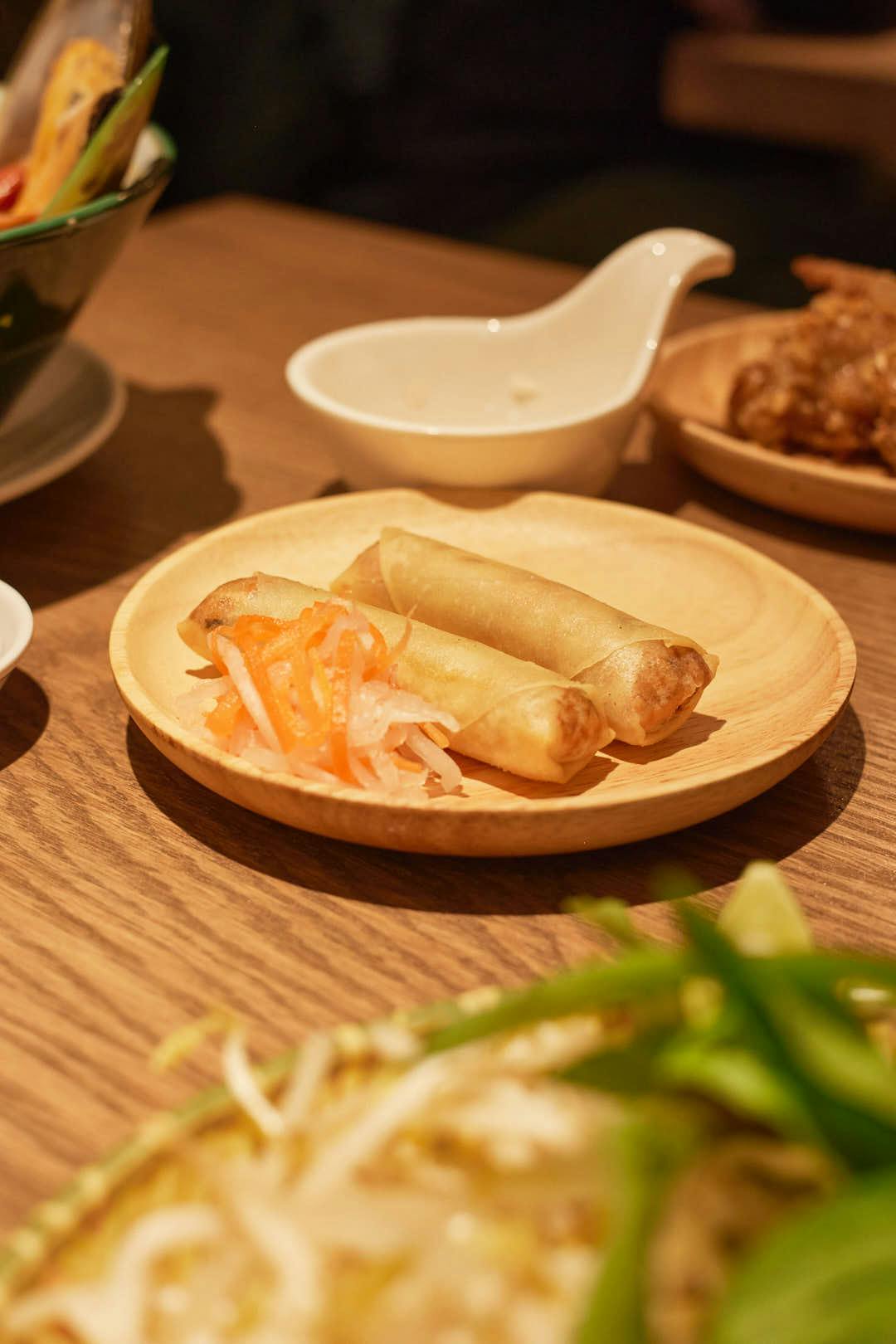
Instead of rice paper – used for the deliciously fresh house rolls – won ton wrappers are also used to crunchy effect in the southern Vietnamese-style spring rolls. Along with shrimp and pork, the addition of taro adds some subtle earthy undertones.

Also crunchy in all the right ways are the deep-fried fish sauce chicken wings sprinkled generously with garlic. The addition of fish sauce and sugar to the batter ensures you get your essential sweet, spicy, salty and umami fixes all in one bite.

Even the papaya and mango salad is all about crunch. Crisp julienned green papaya gets an injection of sweetness from bright mango and a hint of umami from a small troupe of succulent Thai shrimp. Marinated in lime juice, doused in a sweet-&-sour-hot-and-garlicky dressing, and garnished with fresh mint and shrimp chips for scooping, it’s terrifically refreshing.

Also refreshing are the drinks at Pho Le. Traditional iced teas, made with Thai black and more jasmine-forward Thai green teas, arrive in rich hues of milky pumpkin and jade. Swapping out sweetness for citrus is the mashed lemon iced tea, a Hong Kong favourite.

If your previous experiences with Vietnamese iced coffee skewed sweet and creamy, you’ll get a jolt when you order Pho Le’s drip version. A glass lined with a thin layer of condensed milk arrives at the table with your own personal French press attached. In Vietnam, waiting for the lazy drip-by-drip coffee to join the milk gives people plenty of time to chat and people watch. But the drip method also ensures coffee that is darker, denser and just bitter enough to cut the milk’s sweetness. Take a sip and enjoy the full-bodied nuttiness before dashing the contents over a glass of ice to mellow it out.

Also served in a glass is the striking three-colour dessert known as che ba mau. The trio of colours reference the dessert’s three striking layers: sweet red beans, a rich puree of yellowy-green mung beans and shards of quivering, emerald-hued pandam jelly, all of them flooded with frothy coconut milk. A fusion of subtly different flavours and textures, it provides a refreshing and kaleidoscopic finale to any meal.

Looking ahead, there are plans to expand the menu further, adding other Vietnamese soups, for example. However, the fundamental goal is to keep Pho Le extremely pho-cused.
“In Vietnam, there are many shops that only serve pho or another type of soup and that’s what we want to do here,” says Dao. “Instead of a multi-page menu, we want to do one particular dish – and do it very well. Since pho is the national dish of Vietnam, we don’t want to mess it up.”
Recommended For You